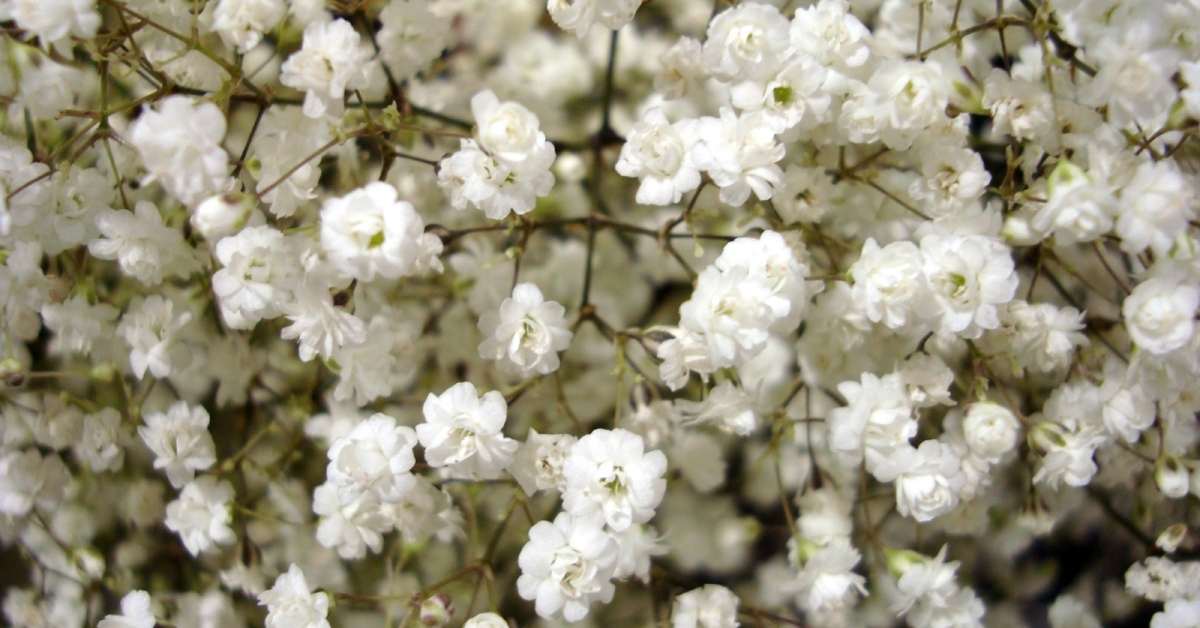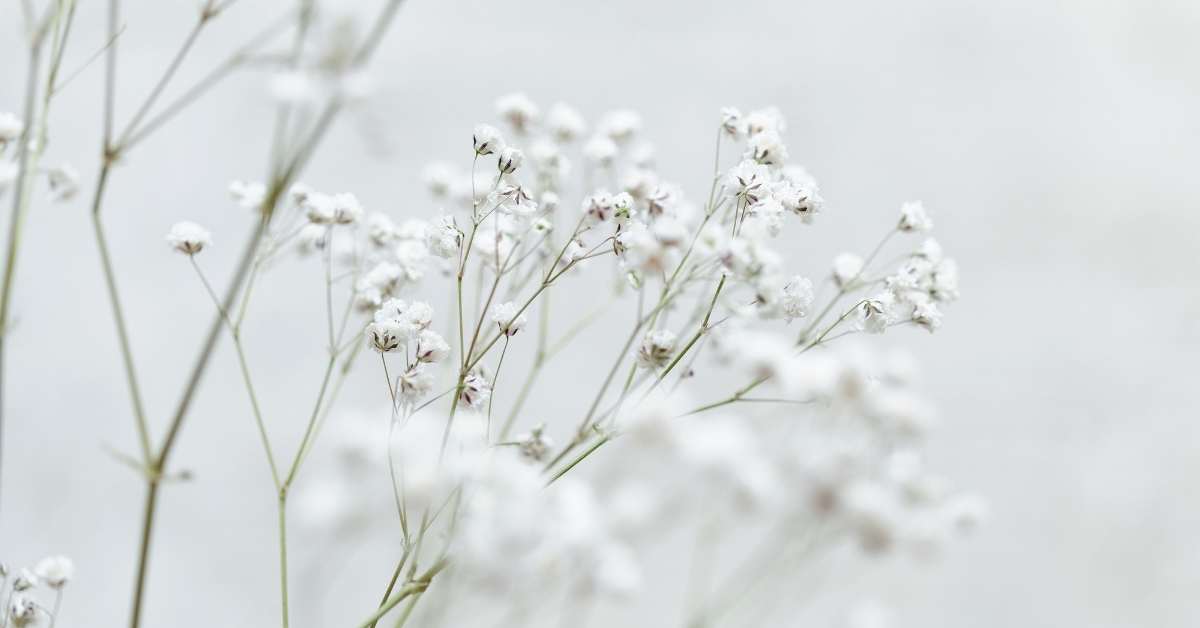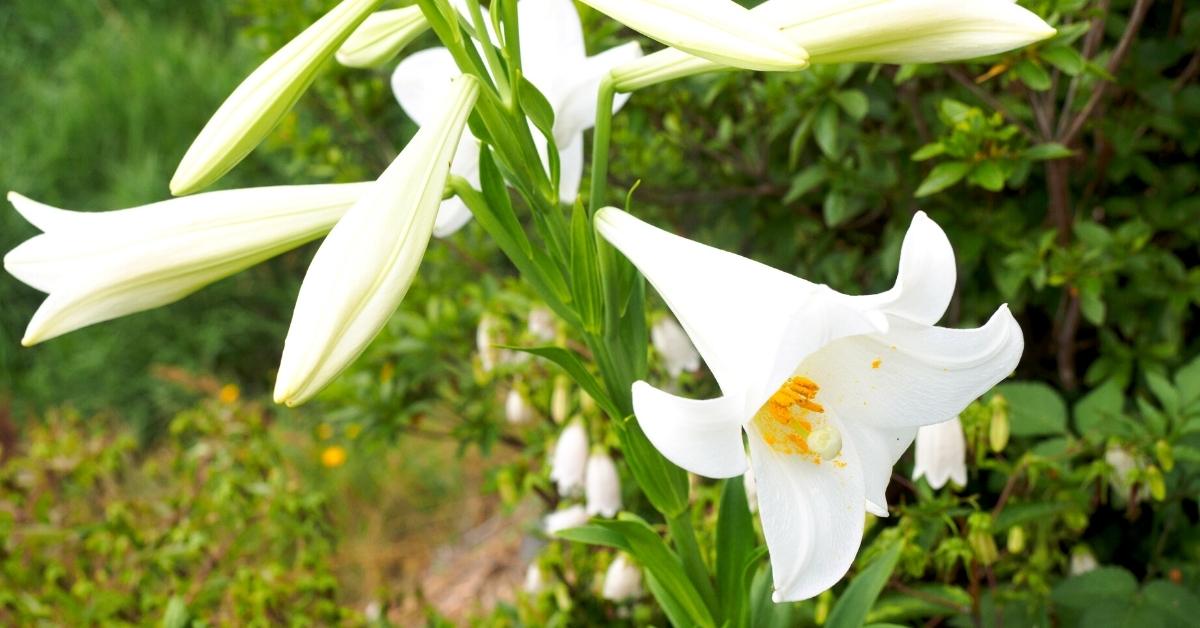When you relate the clouds of flowers to the frosty Breath of a baby on a cold winter day, Baby’s Breath is a beautiful description of the masses of delicate white blossoms. Because certain members of this plant family like lime soils, the Greeks used the terms gypsos (lime) and philos (loving) to characterize it.
Why do they call it baby’s breath?
Flowers known as “baby’s breath,” are said to have originated in Eastern Europe. Gypsophila is the common name for these flowers. Because of its endearing and innocent appearance, which is reminiscent of a young child, it is often referred to as Baby’s Breath. This is because of its widespread popularity.
Plant Specifications
The taller form Gypsophila paniculata grows 36 to 48 inches in height and definitely requires full sun to grow well.
Baby’s Breath blooms in white and pastel pink and delights our cut flower baskets throughout early to mid-summer.
Plant the baby’s breath 24 to 365 inches apart in the planting soil without peat moss. It loves alkaline soil (a handful of lime sprinkled around the plant after planting is a good idea) and high-organic-matter soils.
It is easily propagated by spring seeds, division, and soft cuttings.

Recommended varieties and descriptions of Babys Breathe:
While there are approximately 100 species of this plant worldwide, only four species are grown in most gardens. Two, G. repens, a low-growing plant suited for the rock garden and not the perennial border, and G. elegans, an annual form, will not be described here.
G. paniculata‘Bristol Fairy’ 36 inches tall and double white flowers. Excellent for cutting.‘Schneeflocke’ ( In North America, it is sold as ‘Snowflake’) 36 inches, double white blooms‘Viette’s Dwarf’ 18 inches to 24 inches, double flowers with pink blush color
G. Pacifica is 36 inches tall with single pink blooms. It tolerates acidic soils better than G. paniculata.
Grow Babys Breath in sunny spots in well-drained garden soil.
One design tip is to plant this open, airy plant between two other earlier blooming perennials and allow it to flower over top of their spent blooms. The open nature of the flower display allows adequate sunshine to reach the leaves of neighboring plants.
The plant roots are pretty bitter but are not reported to be poisonous.
Can you grow a baby’s breath from cuttings?
Yes. To increase your chances of successfully reproducing the baby’s breath, it is recommended that you either take cuttings from an established plant or establish a new plant in the garden. Although most regions cultivate a baby’s breath as an annual bloom, there are certain varieties that may survive as hardy perennials. Every variety may be propagated readily from spring or early summer cuttings.
How Do You Grow Baby’s Breath?
Make preparations for the soil. The ideal conditions for growing a baby’s breath include soil rich in organic matter, good drainage, and a sandy or somewhat sandy texture. The ideal pH range for the plant’s environment is between 7.0 and 7.5.
The soil should be wet but extremely well-drained. Repeated blooming may be encouraged by frequently removing wasted flowers from plants. Once they have been established, perennial plants don’t enjoy having their roots disturbed, so try not to move them.
How long does it take to grow a baby’s breath from seed?
If you want your plants to blossom fast from seed, you should start them outside by direct planting in early spring in cold soil when there is still a chance of a little frost. In regions with relatively mild winters, it is possible to seed it directly in late fall. It takes around 10–20 days for seeds to germinate. Plant new seeds every three to four weeks until July to ensure ongoing flowering.
Pruning
After they bloom, you should do most of your baby’s breath pruning. Most of these plants only produce flowers during spring and summer. They would benefit from having the spent blooms removed and the plant completely trimmed down so that they might bloom once again.
Watering
After it has become established in your garden, the baby’s breath is drought-resistant and may survive periods in which the soil is dry. Be sure to keep an eye on your baby’s breath plants and see how often the soil needs to be moistened and how often it needs water to determine the optimal watering schedule for your region. If your plants are suffering from a fungal infection, water them just at the base of the plant or set up a drip irrigation system so that the blooms and branches do not get wet.
FAQ
Is baby’s breath toxic?
These fragile clusters may also be found growing wild throughout a large portion of the northern United States and Canada. They are sometimes referred to as invasive weeds because of their widespread distribution. Baby’s breath is a flower that seems to be completely harmless on the outside, but it really conceals a dangerous little secret: it’s kind of toxic.
Is baby’s breath hard to grow?
No. It’s an invasive plant species. Growing a baby’s breath is fairly simple, and the flowers blossom very quickly after being planted. It is a common flower to use as an accent in floral arrangements such as bouquets, corsages, and flower vases. It is also an excellent choice for use as a filler in gardens kept at home. These plants produce a profusion of blooms that are either white or pink in color.
How long can baby breath last?
If they are properly maintained, fresh ones may stay edible for anywhere from eight to ten days or even longer.
Does baby’s breath bloom all summer?
G. paniculata, often known as common baby’s breath or panicled baby’s breath, is a tall perennial developing a store taproot around 13 feet long. This plant is favored by florists because it has dainty flowers that may be either white or pink and bloom from summer into October.
Is baby’s breath expensive?
No. When it comes to the bridesmaids’ bouquets or the centerpieces, baby’s breath is a choice that is both economical and low-cost. It is very resistant to damage and has a very long lifespan. This flower has a delicate appearance that is yet delicious and seductive.


